Birds are known for their ability to fly, and some species have adapted to fly at incredibly high altitudes. These birds have developed unique features that allow them to conserve energy and stay aloft for long periods of time. They use different techniques to soar on thermals and use tailwinds to reach great heights.
In recent years, modern technology has allowed us to track the flight patterns of these birds and learn more about their migratory habits.
You are reading: The Top 10 Highest Flying Birds In The World
In this article, we will explore the top 10 highest flying birds in the world, including their altitude and unique characteristics.
The Top 10 Highest Flying Birds In The World
Rüppell’s Griffon Vulture
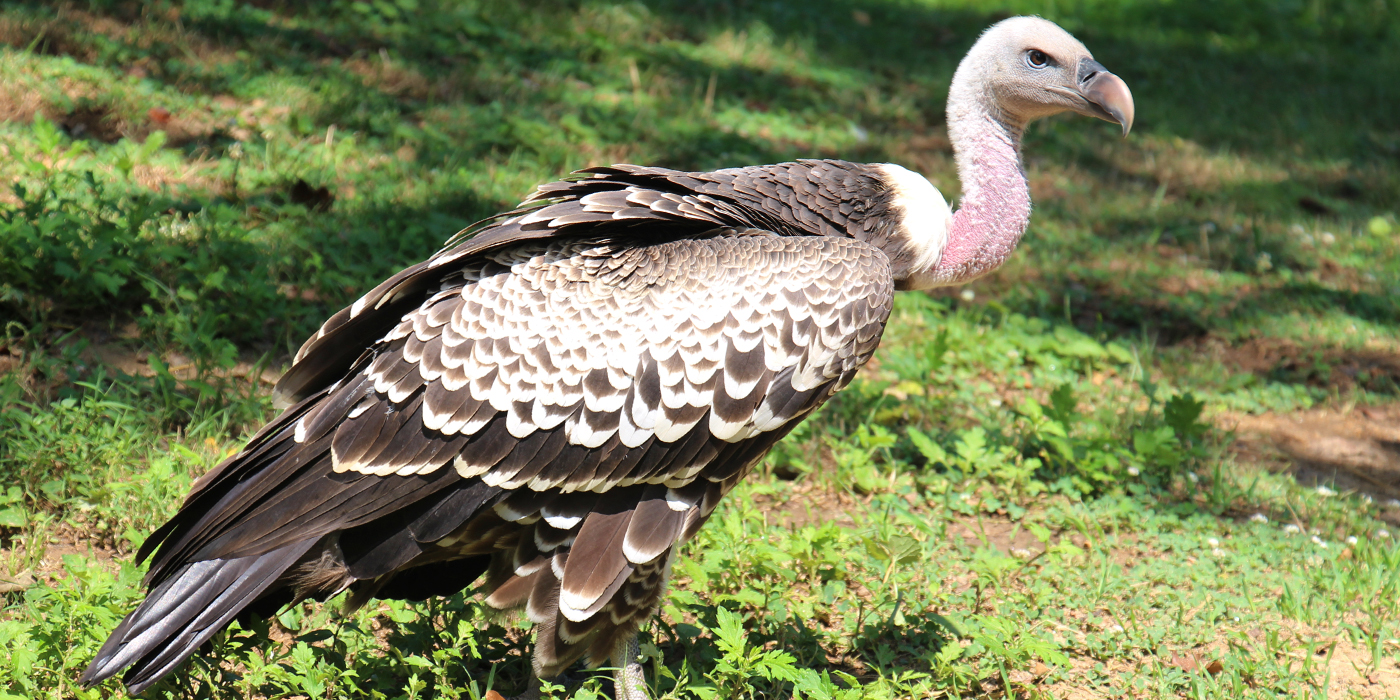
Rüppell’s Griffon Vulture is a large African vulture that is known for its ability to fly at incredibly high altitudes. According to, it is considered to be the highest-flying bird, with confirmed evidence of a flight at an altitude of 11,300 meters (37,000 feet) above sea level. This bird is distributed throughout the Sahel region and East Africa, where it inhabits grasslands, mountains, and woodlands.
It is noticeably larger than the closely related white-backed vulture, with which they often occur in the wild. Both males and females feature similar coloration — brown or black overall, with a white underbelly, thin fluff covering the head and neck, and a white collar. The Rüppell’s Griffon Vulture has exceptionally powerful, pale beaks and eyes that are normally amber to yellow in color.
These birds are between 33 to 38 inches (84 to 97 centimeters) in height, with an 8-foot (2.5 meter) wingspan. They are known to reside near mountainous regions, but will also travel through woodlands and grasslands in order to find food. Unfortunately, Rüppell’s Griffon Vulture is an endangered species, with a rapid decline in population.
Common Crane
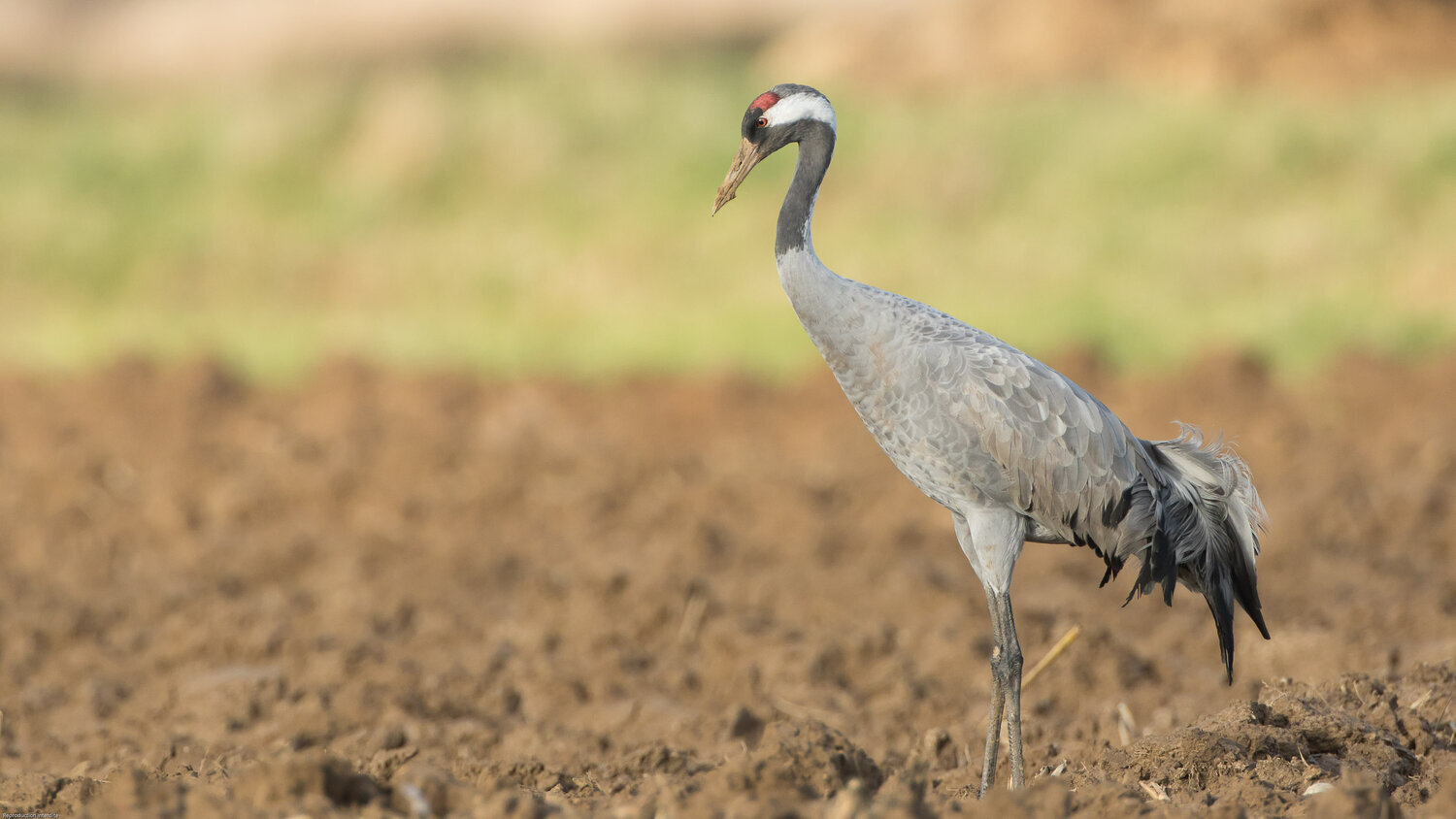
The Common Crane (Grus grus) is a large bird that belongs to the family Gruidae. It is also known as the Eurasian crane and is the only crane species commonly found in Europe besides the demoiselle crane and the Siberian crane that only are regular in the far eastern part of the continent. Here are some interesting facts about the Common Crane:
– The Common Crane is a medium-sized crane that can grow up to 100–130 cm (39–51 in) long with a 180–240 cm (71–94 in) wingspan.
– The body weight of the Common Crane can range from 3 to 6.1 kg (6.6 to 13.4 lb), with the nominate subspecies averaging around 5.4 kg (12 lb) and the eastern subspecies (G. g. lilfordi) averaging 4.6 kg (10 lb) .
– The Common Crane predominantly breeds in boreal and taiga forest and mixed forests, from an elevation of sea-level to 2,200 m (7,200 ft.
– In northern climes, it breeds in treeless moors, on bogs, or on dwarf heather habitats, usually where small lakes or pools are also found.
– The Common Crane is relatively common in parts of Eurasia, but strictly an accidental visitor to North America.
– Most records of Common Crane have been of birds in migrating.
– The Common Crane is sociable and gregarious during periods of migration and wintering, and can form flocks of up to 400 individuals.
– These birds are active during the day and feed on a variety of foods, including insects, small mammals, fish, and plants.
The Common Crane is a fascinating bird that is known for its distinctive appearance and sociable behavior. It is a common sight in parts of Eurasia, where it breeds in boreal and taiga forests and mixed forests. During migration and wintering, it can form flocks of up to 400 individuals and is very noisy during this time.
Bar-headed Goose
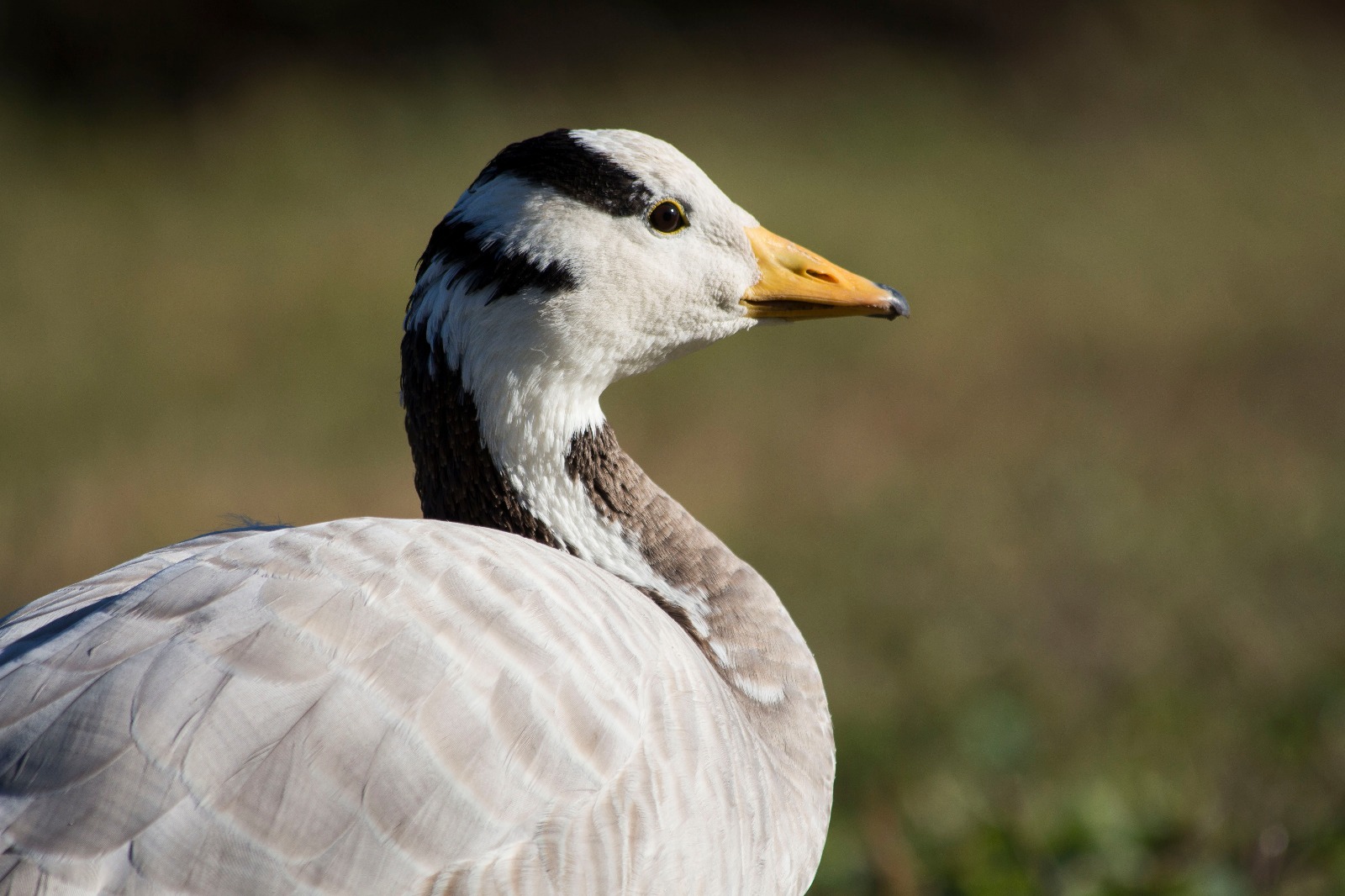
The Bar-headed Goose (Anser indicus) is a species of goose that breeds in Central Asia near mountain lakes and winters in South Asia, as far south as peninsular India. Here are some interesting facts about the Bar-headed Goose:
– The Bar-headed Goose is known for its extreme altitude migration across the Himalayas, where it can fly at heights of up to 9,500 meters (31,000 feet) .
– It is a medium-sized goose, with a light gray plumage, white head, and yellow-orange beak and legs. The head, lower abdomen, and under-tail are white, and the back of the head has black transversal streaks.
– The Bar-headed Goose is mainly vegetarian, feeding on aquatic plants, grasses, and crops. During the winter months, it can be observed feeding on agricultural fields.
– It nests in dense colonies and lays three to eight eggs at a time in a ground nest. Males and females are identical in appearance.
– The Bar-headed Goose has been suggested as being the model for the Hamsa of Indian mythology, and it is also likely to be the Kadamb in ancient and medieval Sanskrit literature.
– Unfortunately, the Bar-headed Goose is threatened by habitat loss due to wetland reclamation, land exploitation, urban expansion, and poisoning from pesticides.
The Bar-headed Goose is a fascinating bird that is known for its extreme altitude migration across the Himalayas and its unique appearance. It is mainly vegetarian and nests in dense colonies, but unfortunately, it is threatened by habitat loss.
Whooper Swan
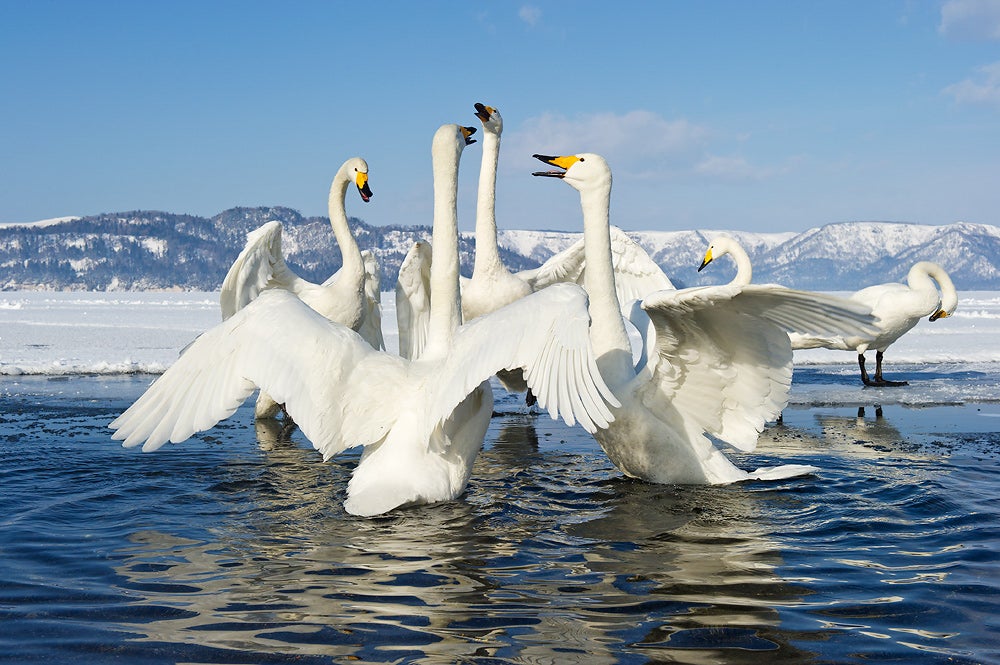
The Whooper Swan (Cygnus cygnus) is a large northern hemisphere swan that is the Eurasian counterpart of the North American trumpeter swan. Here are some interesting facts about the Whooper Swan:
– The Whooper Swan is a large bird, with a length of 140–165 centimeters (55–65 inches) and a wingspan of 205–275 cm (81–108 in). It is bigger than the Bewick’s swan, which it is often confused with.
– The Whooper Swan has a long, thin neck, which it usually holds erect, and black legs.
– The weight of the Whooper Swan is typically in the range of 7.4–14.0 kilograms (16+1⁄4–30+3⁄4 pounds), with an average of 9.8–11.4 kg (21+1⁄2–25+1⁄4 lb) for males and 8.2–9.2 kg (18–20+1⁄4 lb) for females.
– The Whooper Swan breeds in shrub-forest tundra and taiga zones across Eurasia, south of the Bewick’s Swans’ breeding range, extending from Iceland and northern Scandinavia eastwards across northern Russia to Siberia.
– It is a migratory bird, and populations from Iceland, Scandinavia, and Russia winter in the UK, Europe, and Asia.
– The Whooper Swan is much admired in Europe and has been the national bird of Finland since 1981.
– The Whooper Swan is one of the species to which the Agreement on the Conservation of African-Eurasian Migratory Waterbirds (AEWA) applies.
The Whooper Swan is a beautiful bird that is admired in Europe and has a distinctive appearance. It is a migratory bird that breeds in shrub-forest tundra and taiga zones across Eurasia and winters in the UK, Europe, and Asia.
Alpine Chough
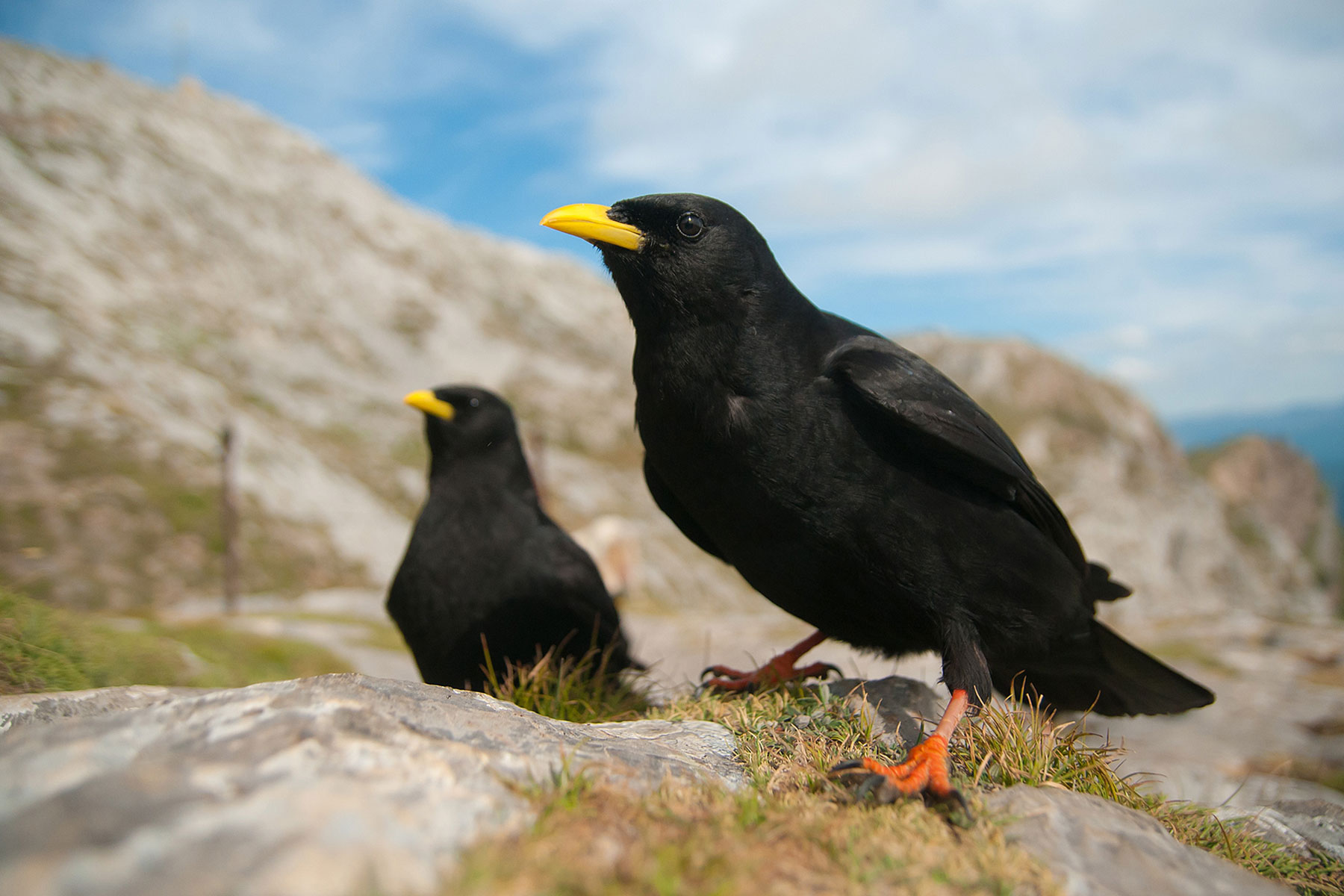
Read more : 10 Types Of Birds To See In New York City
The Alpine Chough (Pyrrhocorax graculus), also known as the Yellow-billed Chough, is a bird in the crow family and one of only two species in the genus Pyrrhocorax. Here are some interesting facts about the Alpine Chough:
– The Alpine Chough is a medium-sized bird, with a total length usually between 34 and 38 centimeters (13.4 – 15 inches) and a wingspan of 75-85 cm (29.5-33.5 in).
– The Alpine Chough has a distinctive appearance, with glossy black plumage, a yellow beak, and red legs.
– Its two subspecies breed in high mountains from Spain eastwards through southern Europe and North Africa to Central Asia and Nepal.
– The Alpine Chough is a social and noisy bird that feeds mostly on insects in summer and berries, seeds, and food waste in winter.
– It is one of the highest-nesting birds on the planet, having been observed to nest as high as 6,500 meters (21,325 feet).
– The eggs of the Alpine Chough have adaptations to the thin atmosphere that improve oxygen uptake and reduce water loss.
– The Alpine Chough was first described as Corvus graculus by Linnaeus in the Systema Naturae in 1766. It was moved to its current genus, Pyrrhocorax, by English ornithologist Marmaduke Tunstall in his 1771 Ornithologia Britannica, along with the only other member of the genus, the red-billed chough, P. pyrrhocorax.
The Alpine Chough is a fascinating bird that is known for its distinctive appearance and high-altitude nesting habits. It is a social and noisy bird that feeds on a variety of foods and has adapted to the thin atmosphere of its high-altitude habitat.
Bearded Vulture
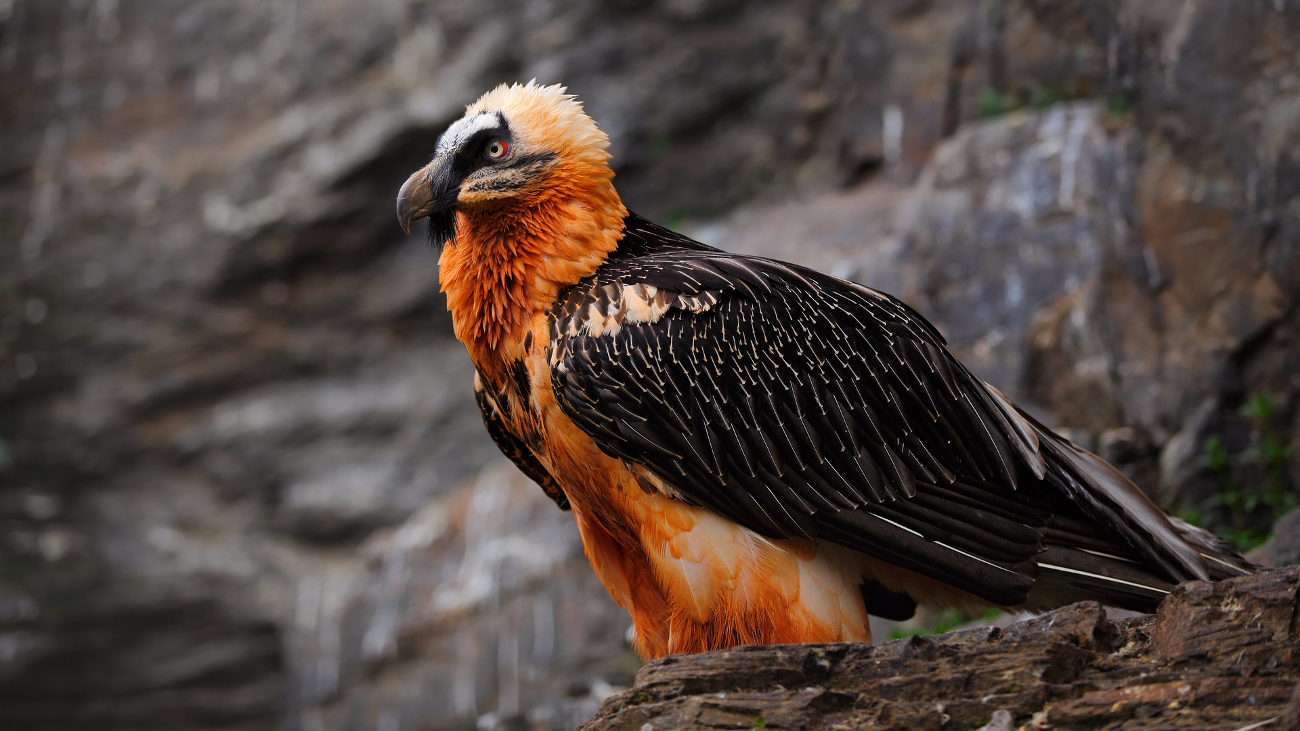
The Bearded Vulture (Gypaetus barbatus), also known as the lammergeier and ossifrage, is a very large bird of prey and the only member of the genus Gypaetus. Here are some interesting facts about the Bearded Vulture:
– The Bearded Vulture is an unmistakable large raptor with an almost albatross-like wing shape and span, coupled with a long diamond-shaped tail.
– Adults are typically between 94 and 125 centimeters (37-49 inches) in length, with a wingspan of 2.31 to 2.83 meters (7.6-9.3 feet).
– The Bearded Vulture is a scavenger and bone-eater with physiological adaptations and digestive enzymes that allow it to digest bone.
– It is found in mountainous regions across southern Europe, Africa, and Asia, from the Pyrenees to the Himalayas.
– The Bearded Vulture is Europe’s rarest vulture, but the population of the species on the continent is on the rise thanks to extensive reintroduction and conservation efforts.
– The bird is called “peres” in Hebrew, and Shimon Peres liked it so much he adopted it as his surname.
– The Bearded Vulture is an important cultural symbol in many areas where it occurs, and it has been featured in mythology, literature, and art for centuries.
The Bearded Vulture is a fascinating bird that is known for its distinctive appearance and scavenging habits. It is found in mountainous regions across southern Europe, Africa, and Asia, and is an important cultural symbol in many areas where it occurs.
Andean Condor
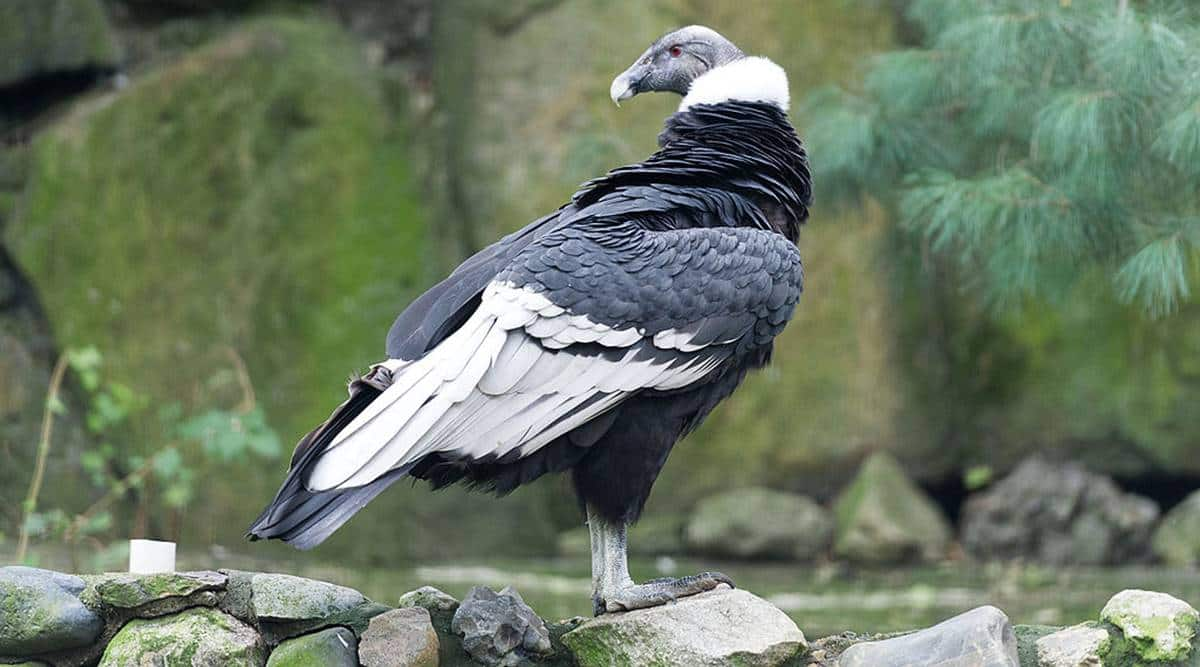
The Andean Condor (Vultur gryphus) is a giant South American Cathartid vulture and the only member of the genus Vultur. It is found in the Andes mountains and adjacent Pacific coasts of western South America, and is the largest flying bird in the world by combined measurement of weight and wingspan, with a maximum wingspan of 3.3 m (10 ft 10 in) and weight of 15 kg (33 lb) . Here are some interesting facts about the Andean Condor:
– The Andean Condor is a scavenger and plays an important ecological role in quickening the decomposition rate of dead animals, thus diminishing the risk of disease associated with the slow rotting of cadavers.
– It has a long lifespan, comparable to humans, with up to 50 years in the wild and up to 80 years in captivity.
– The Andean Condor is found in mountainous regions, as its name suggests, but also lives near coasts replete with ocean breezes and even deserts that feature strong thermal air currents.
– It is part of four national shields, where it represents different values: Bolivia (boundaryless pursuit), Chile (strength), Colombia (liberty and order), and Ecuador (power, grandeur, and valeur).
– The Andean Condor is suffering widespread declines, especially in the northern part of its range, and conservation efforts are underway to protect this magnificent bird.
The Andean Condor is a fascinating bird that is known for its impressive size and scavenging habits. It plays an important ecological role and is part of the national shields of several South American countries.
Mallard
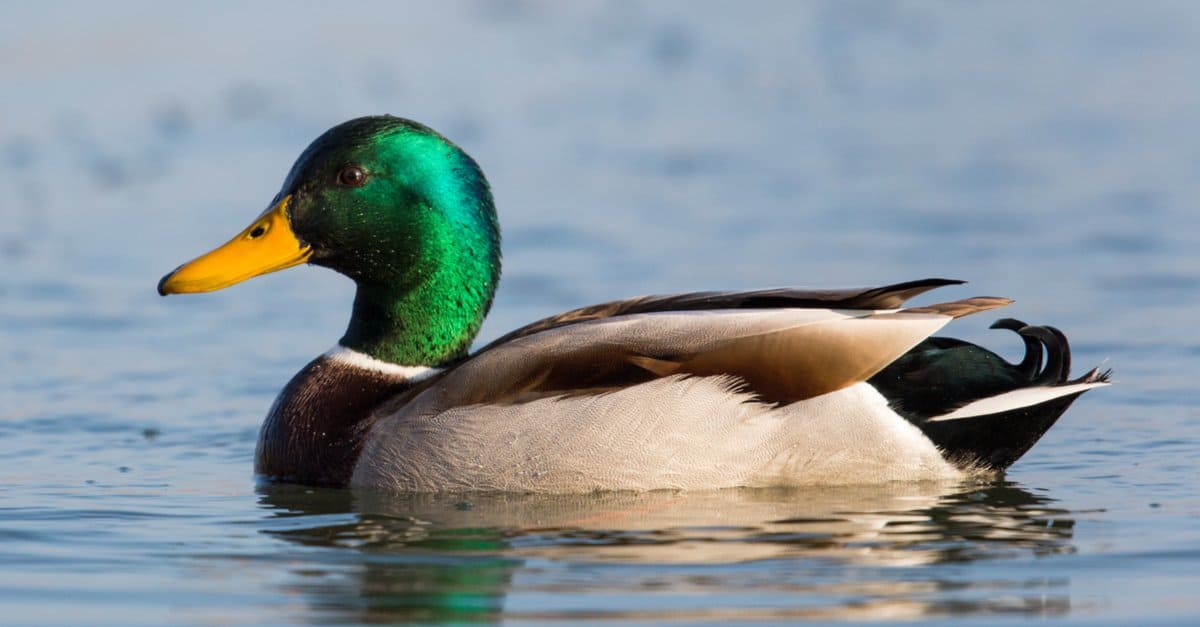
The Mallard (Anas platyrhynchos) is a dabbling duck that is found throughout the temperate and subtropical Americas, Eurasia, and North Africa, and has been introduced to several other countries. It is a medium to large duck with a hefty body, rounded head, and wide, flat bill. Here are some interesting facts about the Mallard:
– The Mallard is the ancestor of nearly all domestic duck breeds, except for the Muscovy Duck.
– The breeding male Mallard is unmistakable, with a glossy bottle-green head and a white collar that demarcates the head from the purple-tinged brown breast, grey-brown wings, and a pale grey belly. The rear of the male is black, with a dark brown tail.
– Females are mottled brown with orange-and-brown bills and a white tail patch that’s often hidden by her folded wings.
– Mallards are commonly found in ponds, parks, and lakes, and are often accepting of food handouts from humans.
– The Mallard is the most abundant duck species in North America.
– Mallards are known to hybridize with other species of waterfowl, including the American Black Duck, Mottled Duck, Gadwall, Northern Pintail, Cinnamon Teal, Green-winged Teal, and Canvasback, as well as Hawaiian Ducks, Mexican Duck, the Grey Duck of New Zealand, and the Pacific Black Duck of Australia.
– The Mallard is an important game bird and is hunted in many parts of its range.
The Mallard is a fascinating duck that is known for its distinctive appearance and widespread distribution. It is an important game bird and is commonly found in ponds, parks, and lakes.
Bar-tailed Godwit
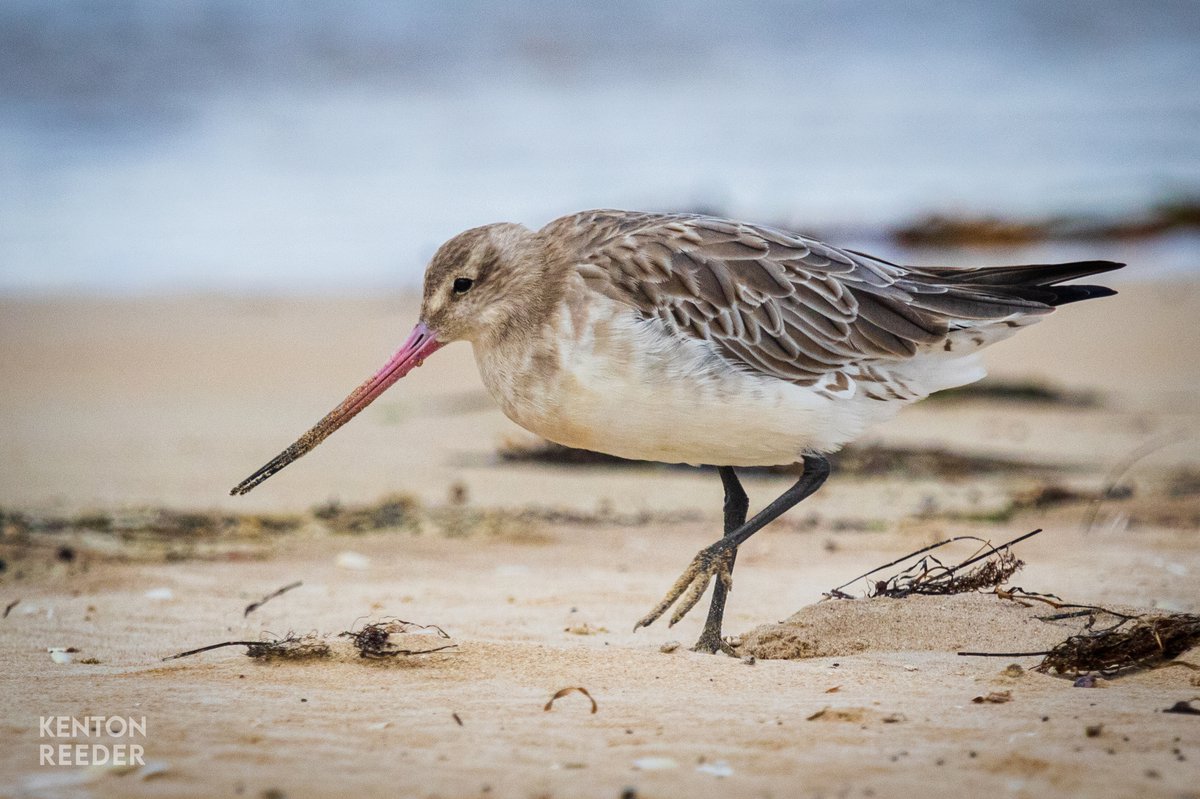
Read more : When To Clean Out Bird Houses?
The Bar-tailed Godwit (Limosa lapponica) is a large wading bird that is part of the family Scolopacidae. Here are some interesting facts about the Bar-tailed Godwit:
Appearance:
– The Bar-tailed Godwit has a distinctive long, upturned bill, long legs, and red breeding plumage.
– In non-breeding plumage, the Bar-tailed Godwit is overall gray-brown.
Habitat and Distribution:
– Bar-tailed Godwits breed on Arctic coasts and tundra from Scandinavia to Alaska.
– They overwinter on coasts in temperate and tropical regions of the Old World, Australia, and New Zealand.
– The Bar-tailed Godwit is a migratory bird and undertakes one of the avian world’s most extraordinary migratory journeys
Behavior:
– The Bar-tailed Godwit feeds on bristle-worms and shellfish on coastal mudflats and estuaries.
– They are carnivores and eat mainly insects.
– The Bar-tailed Godwit is territorial and the courtship display of the male involves loud calls and aerial acrobatics.
Conservation:
– The Bar-tailed Godwit is not considered a threatened species, but conservation efforts are underway to protect this bird.
The Bar-tailed Godwit is a fascinating bird that is known for its distinctive appearance and extraordinary migratory journey. It feeds on bristle-worms and shellfish and is not considered a threatened species, but conservation efforts are still important to protect this bird.
White Stork
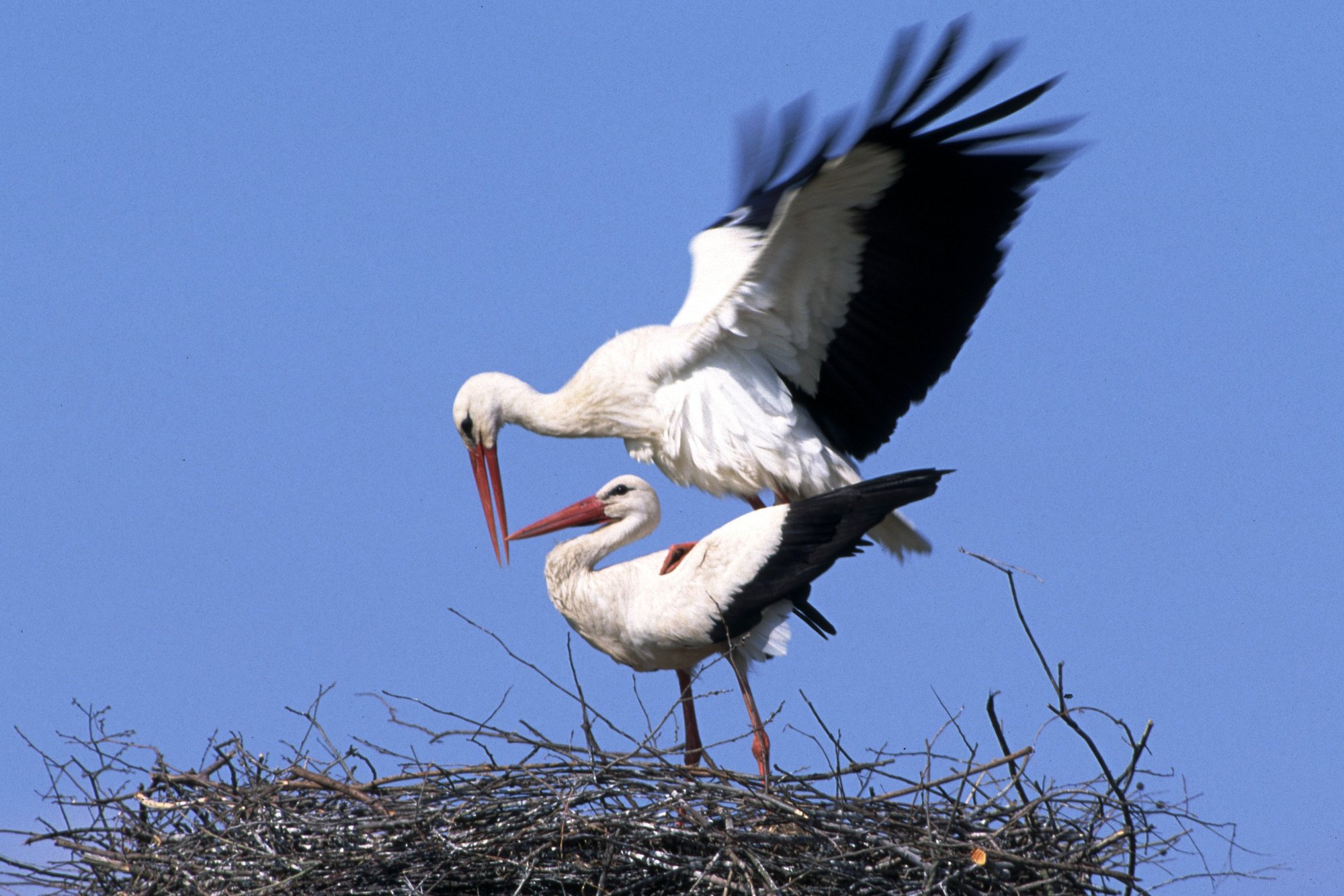
The White Stork (Ciconia ciconia) is a large bird in the stork family, Ciconiidae. Here are some interesting facts about the White Stork:
Appearance:
– The White Stork has a mainly white plumage, with black flight feathers and wing coverts.
– It has long red legs and a long pointed red bill.
– The sexes are identical in appearance, except that males are larger than females on average.
– The plumage is mainly white with black flight feathers and wing coverts; the black is caused by the pigment melanin.
Habitat and Distribution:
– The White Stork is a long-distance migrant, wintering in Africa from tropical Sub-Saharan Africa to as far south as South Africa, or on the Indian subcontinent.
– When migrating between Europe and Africa, it avoids crossing the Mediterranean Sea and detours via the Levant in the east or the Strait of Gibraltar in the west, because the air thermals on which it depends for soaring do not form over water.
– White Storks are found in open farmland and wetlands, with bulky stick nests conspicuous in trees.
Behavior:
– White Storks are long-legged wading birds that feed on small mammals, frogs, large insects such as grasshoppers, reptiles, fish, and occasionally the eggs and chicks of ground-nesting birds.
– They are vocal birds and produce a noisy bill-clattering sound made by rapidly opening and closing their beaks, which is amplified by the throat pouch.
– White Storks do not pair for life, but both members of the pair build a large stick nest, which may be used for several years.
Conservation:
– The White Stork is not considered a threatened species, but conservation efforts are underway to protect this bird.
The White Stork is a fascinating bird that is known for its distinctive appearance and long-distance migratory habits. It feeds on a variety of foods and is not considered a threatened species, but conservation efforts are still important to protect this bird.
FAQS
1. What is the highest-flying bird in the world?
The Rüppell’s Griffon Vulture is considered to be the highest-flying bird, with confirmed evidence of a flight at an altitude of 11,300 meters (37,000 feet) above sea level.
2. What is the range of altitudes at which these birds fly?
The top 10 highest flying birds in the world can fly at altitudes ranging from 16,000 feet to 37,000 feet.
3. What are some of the unique characteristics of these birds that allow them to fly at high altitudes?
These birds have adapted to fly at high altitudes, where the air is thin and oxygen is scarce. They use different techniques to conserve energy and stay aloft for long periods of time, such as soaring on thermals and using tailwinds.
4. What are some of the other interesting facts about these birds?
Some of these birds are also known for their long-distance migrations, which can take them across continents and over mountain ranges. They have unique physical characteristics that allow them to survive in their high-altitude habitats.
5. Are these birds endangered?
Some of these birds, such as the Rüppell’s Griffon Vulture, are endangered species, with a rapid decline in population. However, others, such as the Mallard, are not considered threatened.
Source: https://petstutorial.com
Category: Birds










